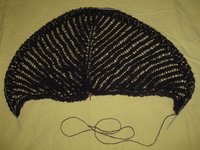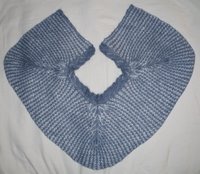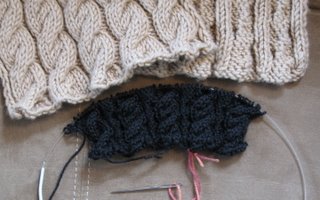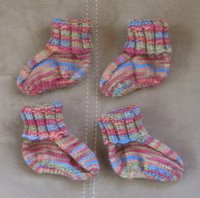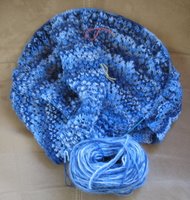Terns!
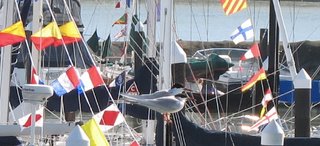 These terns were having fun flying around squawking at the flags for Opening Day. (Aunt C., they were on the small side relative to the other terns I've seen lately. What kind are they?)
These terns were having fun flying around squawking at the flags for Opening Day. (Aunt C., they were on the small side relative to the other terns I've seen lately. What kind are they?)Ripping HH. Since I'm using grabby yarn and I needed to rip quite a few pattern repeats, I ran a circular needle through every 6th stitch in the destination purl row. The stitch in the k3tog stitch was easiest to catch. I ripped quickly back to that row, then slipped the live stitches onto another needle. The ripped yarn is a bit fuzzy and a few spots drifted slightly, but it's okay. I wouldn't rip this stuff twice, though!
I made a mistake and knit the center bit of row 72 instead of the center bit of 102, and since the yarn wasn't stable enough for a second rip, I laddered and dropped the extra yo, then worked a k4tog. I usually leave one mistake in each piece and I do wish this one weren't in such an obvious spot, but it's yet another much-needed lesson in humility. At least it's symmetrical!
I had hoped to have a finished HH photo, but I have a few rows to knit yet. Soon.




